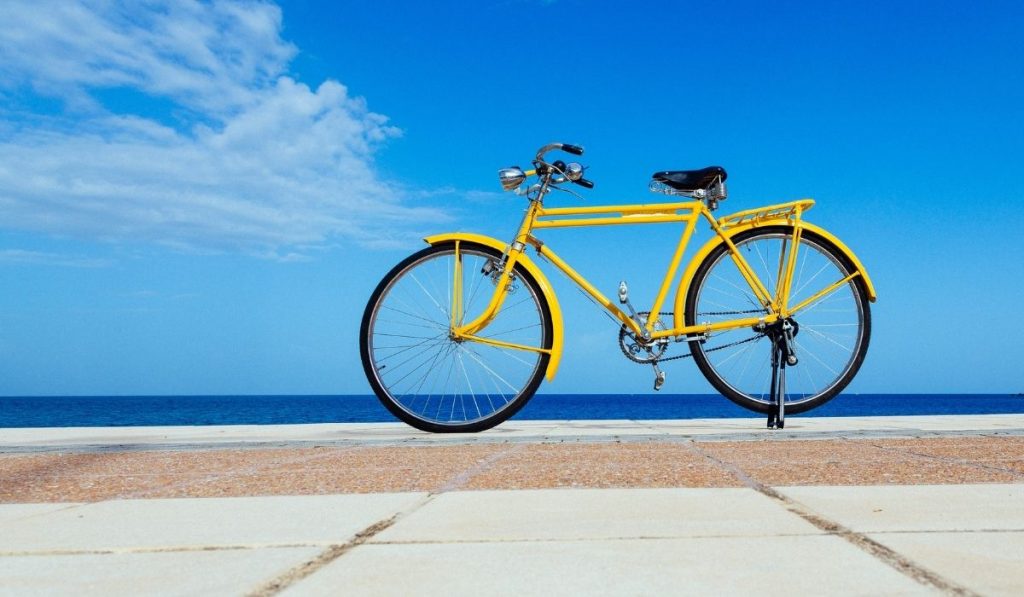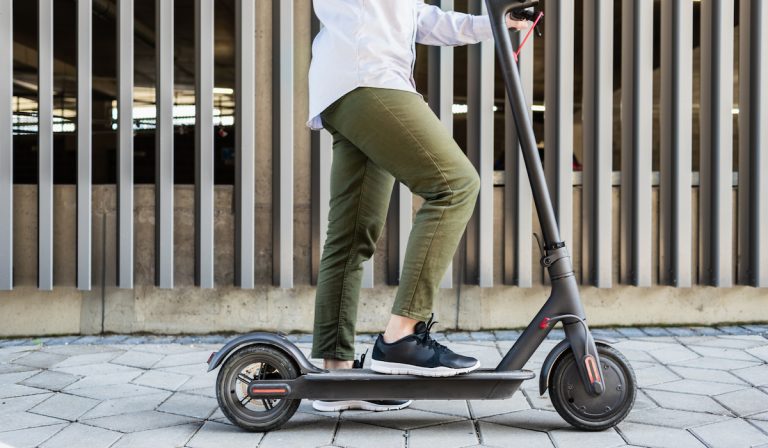Schwinn Bike Weight Limit
Whether you’re looking to use an indoor exercise bike or an outdoor bike, you need to know if it is sturdy enough to support your weight and any other additional weight while riding. Just like any other workout machine, Schwinn bikes have weight limits that greatly vary depending on the individual model.
So if you’re looking to get the best out of your ride, knowing the weight limits of individual Schwinn bikes will help you determine which is best for you.
How Much Weight Can a Schwinn Bike Hold?
On level ground, Schwinn bikes often hold about 300 pounds at a speed of 10 mph. However, the weight a bike can hold also varies greatly depending on a few factors, including the strength of the material used for the frame, the weight distribution, tires, wheels, and if you are planning to carry heavy loads.

Factors Affecting the Weight Limits of Schwinn Bicycles
When determining the maximum weight a bike can hold, all the bike’s structural components are considered, from the wheels to the frame. Let’s have a detailed look.
Tires
If you are overweight or want to load the bike with heavy loads, you should consider getting a bike with broader tires for increased width, cushioning, and more surface area in contact with the ground for more stability. Thin tires are not suitable for bearing heavy loads. They will naturally blow out, get flat, burp, or bend the rim.
The tires must also be inflated to their maximum PSI range for maximum load capacity and endurance.
Frame
Sturdy bike frames offer more endurance and stress tolerance. Therefore, if you are a plus-size rider or planning to use your bike to ferry loads, consider using a bike with a strong frame, most preferably one of steel or a steel alloy.
Second to steel is aluminum, which builds strong carbon fiber and titanium bikes. Although they are strong, their frames are more brittle when under heavy weight pressure.
Wheels
Since the weight atop the bike constantly stresses the wheels, they may be the first features to feel the effects of the heavy load. If the pressure becomes too much, the rims will easily become deformed.
However, larger wheels are more susceptible to deformation due to heavy loads compared to their miniature aluminum or steel alloy rims. Choose rims with at least 32 stainless steel spokes for maximum support under heavier loads.
Suspension
If you are riding in rough terrain, you can use a suspension fork or a suspension frame to help your bike absorb any shocks to give a smooth ride.
However, it can be a little difficult to find the best suspension that works for a plus-size rider because of the weight. The shocks will push your bike against the suspension, which is neither good nor safe. Therefore, rigid or locked-fork suspensions are preferable for larger individuals and hauling heavier cargo loads.
Handlebars and Seat
These points are your contact points with the bike, and depending on their positioning, they help in the weight distribution across the bike.
The best handlebars and seats should be wide enough to support and ease the task of weight distribution for heavy riders, compared to the pressure and stress experienced with narrow handlebars and seats.

Identifying a Schwinn Bike’s Weight Limit
Are you uncertain of your Schwinn bike’s weight limit? You can obtain this information by either of two methods.
First, you can get the information directly from the manufacturer or through mail or phone. If the weight limit is not indicated on the bike documentation, look up the Schwinn website. Either way, you can ask for the necessary information.
If you do not get any relevant information from the manufacturer, there is no agreed-upon method to test the weight limits of the bike. However, the user can explore a number of stress points to determine the stress level that the bike can comfortably accommodate.
To be safe, research the bike’s make and model, exploring features like the material used to build it and how it is built to create an estimate of how much the bike can hold. If your weight or both your combined weight and that of any additional luggage exceed the estimated weight by 10 pounds, you should trade the bike in for an enhanced one that can accommodate the extra weight.

How Much Weight Can a Schwinn Bike Comfortably Carry?
For a manufacturer to give you a maximum weight limit of a bike, the bike must have been put through thorough tests to test the extremes until they settle on a certain amount of weight to be considered the maximum weight limit for the bike. Therefore, any weight exceeding that stipulated by the manufacturer should be considered unsafe and unfit for riding on the bike.
However, the data provided are sometimes the averages of different makes of the same bike based on the material used to make it and other additional features like the suspension. Therefore, if the indicated maximum weight limit is 300 lbs, the material used to make it is carbon fiber, and the wheels are larger than 26’’ in diameter, you should consider adjusting the weight shown by 20 pounds less than the indicated limit.
However, if the bike is made of steel or an alloy steel frame, has fat tires and wide handlebars, you should be comfortable scaling up above the weight shown by even close to 50 pounds.
For such Schwinn bikes, they are often hybrid bikes, and they have the same robustness compared to mountain bikes when riding on smooth terrain. Conventionally, what a bike can handle on a smooth terrain is often much more compared to what it can handle when riding on rough terrain.
Therefore, remember to consider the terrain factor to avoid stressing your bike whenever you switch riding terrains.
What Happens if You Exceed the Weight Limit?
If the maximum weight limit is surpassed, your bike will experience a lot of stress, especially on the tires and wheels, because they can handle more weight. They will naturally become deformed and may get a few broken spokes or even a burst tire.
If you are not sure whether you are putting too much pressure on your bike, take it to a relatively smooth path and ride it over short distances while watching out for a few causes of concern:
- Are the rims making any noise? If yes, check to see if it has flattened in any way. If the spokes are also bent or broken, you have probably exceeded the weight limit the bike can hold.
- Are the tires underinflated? If the rims are underinflated and are in contact with the ground, you should stop and instantly inflate them to the maximum possible PSI, lest you risk collapsing the bike under the pressure of your weight.
- Has the seat been repositioned? The seat position often shifts as a result of too much weight imposed on the seat that it cannot tolerate and instead shifts position. If you notice any shift in the seat positioning, you should not ride the bike.
- How did the suspension manifest itself? If you cannot lock your suspension in one place and the fork significantly compresses as soon as you sit on the bike, you may weigh more than the bike can handle, and you should immediately quit.

Tips for Heavy Bicycle Riders
- Prioritize comfort while on the bike on three crucial points: the pedals, handlebars, and the saddle.
- Avoid curbs and potholes whenever possible while riding. It can be a bit challenging to spot them in advance, but if you bump into one, it can cause severe damage to your bike.
- Use tires with 32 or more spokes to give your tubes, wheels, and tires the maximum protection possible.
- Choose bikes with wide handlebars to help distribute the weight across the bike and enhance comfort. You can alternatively apply thick tape to the handlebars or apply two tapes in different layers.
- Depending on the specific inflation limits of the tires, inflate your tires to the maximum limits for maximum endurance. If you feel they are not strong enough still, you can switch them with better and larger tires.
- Book a regular bike service at the nearest bike service station. There, you will get all the possible problems noticed and fixed early.
- If the saddle on the bike is uncomfortable for you, feel free to switch to something more comfortable for you.
- If you have parts that break down or terrain that feels super tough, do not beat yourself down. That is part of cycling, and you should give yourself credit for work well done and enjoy every bit of cycling.
Is a Fat Tire Bike Easier to Ride?
Fat tire bikes are incredibly easy to ride. They give more balance and control because of the increased surface area in contact with the ground, enhancing stability. Newbie riders will definitely want to enjoy more adventure after riding on a bike with fat tires.
Conclusion
Schwinn bikes are good exercising bikes, but you should only ride them within the confines of safe weight limits the specific bike can handle.
If you are heavier than how much the bike can support, consider trading in the bike for a better and enhanced bike to accommodate your weight. Stay safe and enjoy the ride!
Resources
- https://bikehike.org/how-can-you-determine-the-weight-limit-on-a-schwinn-bicycle/
- https://outdoorshelp.com/schwinn-bike-weight-limit/
- https://www.reddit.com/r/cycling/comments/29xypg/weight_limits_i_bought_a_bike_and_im_about_65_lbs/
- https://livehealthy.chron.com/maximum-weight-limits-recumbent-bikes-5553.html
- https://goingfitunfit.com/do-bicycles-have-a-weight-limit/
- https://ebikepursuits.com/do-bicycles-have-a-weight-limit/






